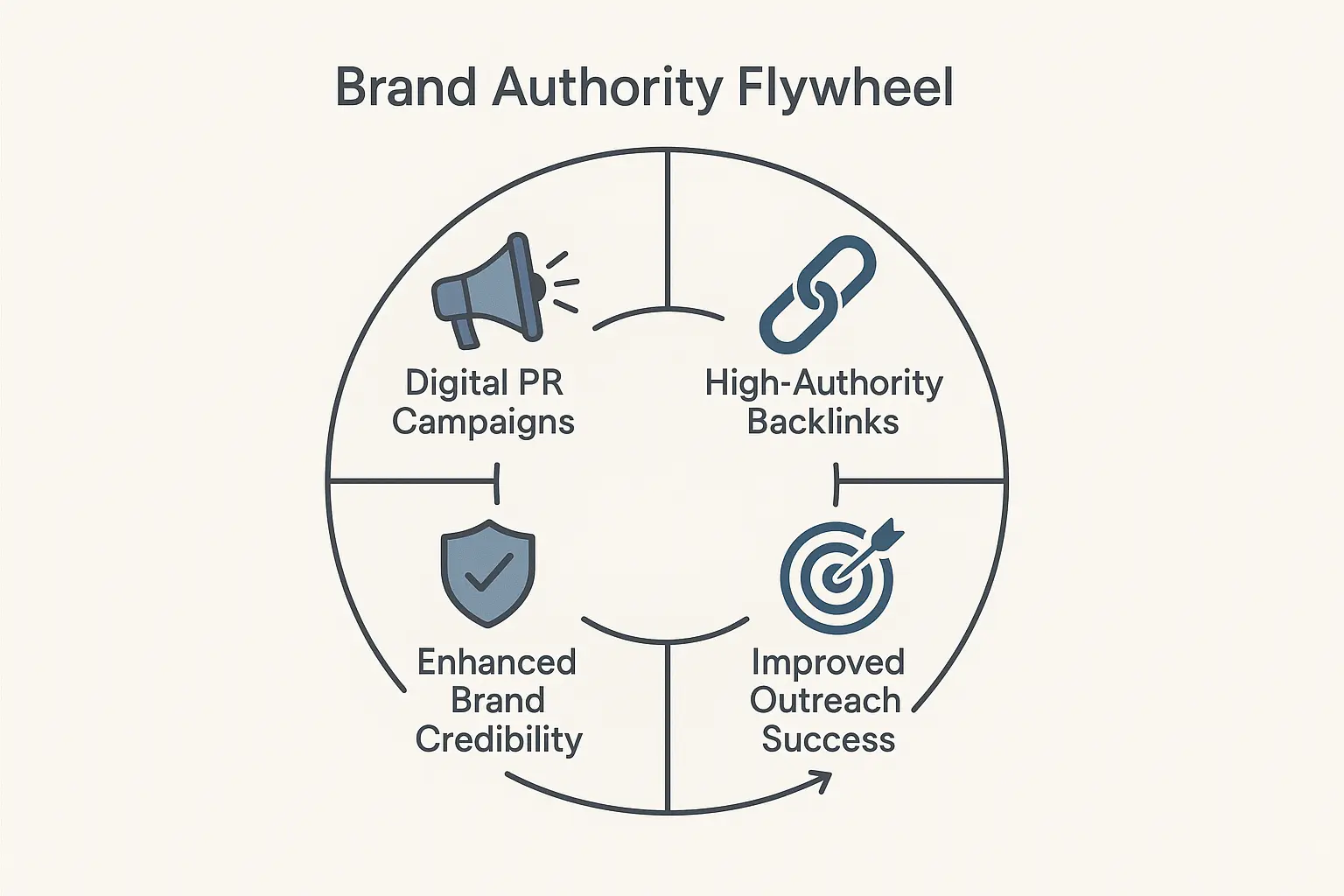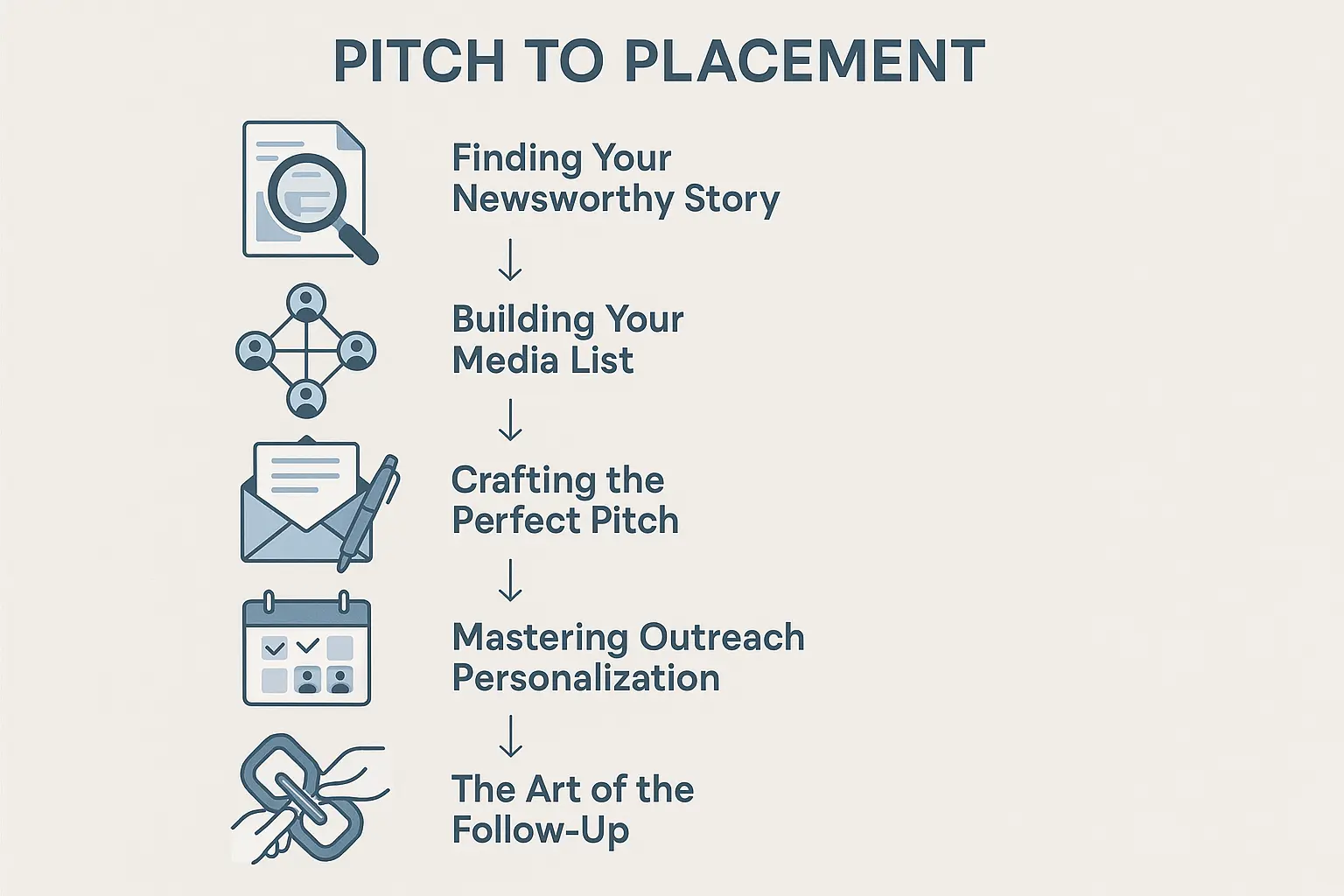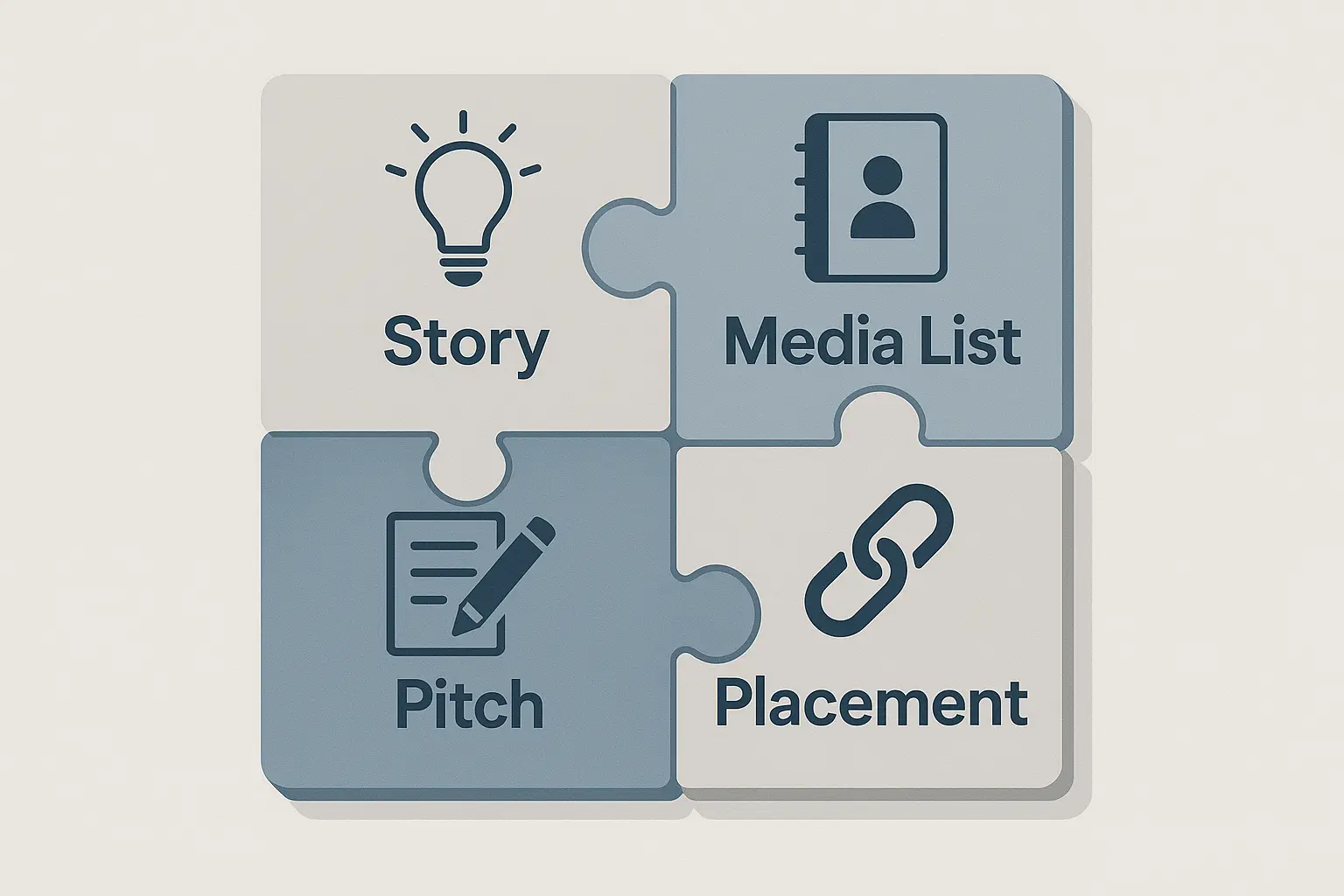You’ve spent weeks crafting the perfect blog post for your client. It’s well-researched, beautifully designed, and perfectly optimized. You hit publish, and… crickets. Sound familiar?
Many agencies find themselves on a content treadmill, producing great work that never gets the high-authority attention it deserves. They fall back on manual, one-by-one link building that’s slow, expensive, and rarely moves the needle.
But what if you could earn dozens of powerful links from a single campaign? What if you could get your client’s brand featured on the news sites and industry blogs their customers already trust?
This isn’t a fantasy. It’s the power of Digital PR—a strategy that can transform your content from a lonely island into a landmark destination. And it’s more accessible than you think. A staggering 88% of PR professionals believe the future of their industry lies in this exact kind of digital storytelling. Here’s how your agency can make it happen.
What is Digital PR (and Why Should Your Agency Care)?
Think of traditional PR as getting a mention in a print magazine. Digital PR is its modern sibling, supercharged for SEO.
Digital PR is the art of creating compelling stories and assets that earn editorial mentions and backlinks from high-authority online publications.
Unlike guest posting, where you write an article for another site, Digital PR involves creating something so valuable—like original research, a unique tool, or an expert commentary—that journalists and bloggers want to write about it and link back to you as the source.
The payoff? It’s huge. Brands that consistently earn high-authority backlinks see, on average, 3.8x more organic traffic than those who don’t. These aren’t just any links; they’re powerful trust signals to Google that build lasting brand authority.
The 5 Steps to a Successful Digital PR Campaign
Ready to move from pitching into the void to earning placements that matter? Follow this tactical framework.
Step 1: Brainstorm a Link-Worthy Idea
The foundation of any great campaign is an idea that journalists can’t ignore. Forget generic “10 Tips” articles. You need to create a genuine content asset.
So, what do journalists actually want? Research shows that 75% of them are looking for pitches that include original research and data.
Here are a few proven concepts for your content asset:
-
Data-Driven Stories: Survey a few hundred people about a trend in your client’s industry. Analyze public data to reveal a surprising insight. Create a study that ranks cities or states by a unique metric.
-
Expert Commentary: Position your client as a thought leader by offering unique, data-backed commentary on a trending news story.
-
Helpful Tools & Calculators: Develop a simple, free tool that solves a common problem for your client’s audience.
-
Compelling Visuals: Create a beautiful infographic or an interactive map that simplifies a complex topic.
The key is to create something genuinely newsworthy that provides value to a publication’s audience.

Step 2: Build Your Media List
Once you have your killer idea, you need to know who to send it to. This is where most campaigns fail. Don’t blast your pitch to a generic list of 1,000 “info@” email addresses.
Instead, build a curated media list of 50-100 highly relevant journalists, editors, and bloggers who have:
-
Covered similar topics before. A quick site search on Forbes or TechCrunch for your keywords will reveal who is writing about your space.
-
Written for publications your client’s audience reads. Use tools like SparkToro or Ahrefs to identify where your target audience spends their time online.
-
Recently linked to data-driven content or third-party sources. This shows they’re open to what you’re offering.
For each contact, find their name, publication, email address, and a link to a recent, relevant article they wrote. That last detail is crucial for the next step.
Step 3: Craft a Pitch They Can’t Refuse
Journalists receive dozens, if not hundreds, of pitches every day. Yours needs to stand out instantly. Brevity and relevance are your best friends. Pitches with subject lines under 10 words get a 50% higher open rate.
But the real secret? Personalization.
A lack of personalization is the number one reason journalists reject pitches. Your email can’t read like a copy-and-pasted template.
Here’s a simple structure for a winning pitch:
-
The Subject Line: Make it short, descriptive, and intriguing. For example: [Data] 70% of Remote Workers Plan to Travel in 2024
-
The Personalized Opener: Reference the specific article you found in Step 2. For example: “Hi Jane, I just read your piece on the future of work in Forbes. Loved your take on the four-day work week.”
-
The Core Value Prop: Get straight to the point. What is your story, and why should their audience care? For example: “Building on that theme, my team just released a study that found…”
-
The Easy “Yes”: Include a clear link to your asset and offer exclusive access, an interview with the expert, or a custom quote. Make it easy for them to say yes.
Step 4: The Art of the Follow-Up
You hit send… and you wait. Don’t panic if you don’t hear back immediately. Journalists are busy. A polite, concise follow-up isn’t annoying; it’s often essential.
How essential? Data shows that following up just once can increase response rates by up to 65%.
Your Follow-Up Cadence:
-
Initial Pitch: Day 1
-
Follow-Up 1: Day 3-4 (Reply to your original email and add a simple, “Just wanted to make sure this didn’t get buried.”)
-
Follow-Up 2 (Optional): Day 7-8 (Offer a new angle or a different key statistic from your research.)
After two follow-ups, it’s time to move on. Don’t pester them.
Step 5: From “Yes” to Placement
When a journalist responds with interest, your job is to make their job as easy as possible. Be prepared to provide:
-
High-resolution images or embed codes for your visuals.
-
A summary of key data points in bullet points.
-
Quotes from your client’s expert.
-
Quick answers to any follow-up questions.
Once the article is live, you’ve done it. You’ve earned a high-authority backlink that drives referral traffic, boosts SEO, and builds your client’s brand. Each successful placement fuels brand authority, creating a cycle of visibility and growth.
This process isn’t just about one-off wins. A well-executed campaign can be scaled. For agencies struggling with resources, a dedicated white-label SEO partner can provide the specialized expertise to run these campaigns, freeing your team to focus on client strategy and relationships.

Frequently Asked Questions About Digital PR
Q: What’s the real difference between Digital PR and guest posting?
A: Guest posting is about writing for another site. You contribute a full article and typically get a link in your author bio. Digital PR is about earning a mention in another site’s article. Your content is so valuable that a journalist cites you as a source, which Google often sees as a more powerful, editorially-given endorsement.
Q: How many links can I expect from one campaign?
A: It varies widely. A niche campaign might earn 5-10 high-quality links. A viral, data-driven story could earn 50-100+ links, including placements on national news sites. The goal is quality over quantity. One link from The New York Times is worth more than 100 links from low-quality directories.
Q: This sounds like a lot of work. How can a small agency possibly do this?
A: Digital PR does require a different skillset than traditional SEO. The key is to start small. Pick one client and one great idea. Focus on building a small, highly-targeted media list. As you see results, you can invest more. Many agencies also choose to scale their SEO services by partnering with specialists who handle the execution.
Q: How long does it take to see results?
A: A single campaign, from ideation to outreach, can take 4-6 weeks. The SEO impact of the links you build can take another 2-3 months to fully materialize in search rankings. Digital PR is a long-term authority-building strategy, not a quick-win tactic. AI-powered SEO automation can also help streamline parts of the process to speed up workflows.

Your Next Step in Building Authority
Digital PR bridges the gap between creating great content and getting it in front of the people who matter. It moves link building from a tedious chore to a creative, scalable strategy that builds real, defensible brand equity for your clients.
By focusing on newsworthy ideas, personalized outreach, and making journalists’ lives easier, your agency can start landing the kinds of placements that transform a brand’s digital footprint.
Ready to integrate these powerful strategies into your agency’s offerings? Learn how the right partnership can help you deliver incredible results for clients without overloading your team.

